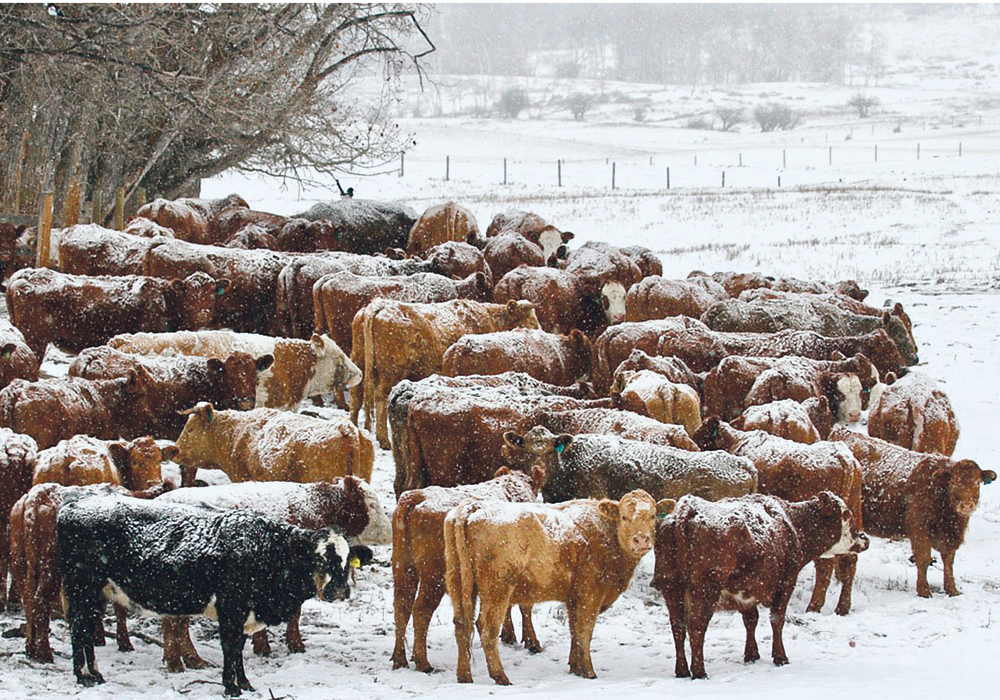I spoke to a veterinarian in Western Canada this week who was dealing with a significant disease outbreak in one of his client’s herds.
The cow-calf producer had a number of cows abort and now at calving time, they had a significant number of calves dying with what appeared to be septicemia, which is a bacterial infection that enters the blood stream.
Samples were sent to the diagnostic laboratory and Salmonella dublin bacteria were isolated.
Salmonella dublin is a strain of Salmonella that has been appearing with increasing frequency in dairy herds and now we are seeing some cases in cow-calf herds as well.
Read Also

Saskatchewan dairy farm breeds international champion
A Saskatchewan bred cow made history at the 2025 World Dairy Expo in Madison, Wisconsin, when she was named grand champion in the five-year-old Holstein class.
This bacteria is often multi-drug resistant, is difficult to treat with antimicrobials and is extremely hard to control once it gets into the herd.
As with many infectious disease outbreaks that I sometimes talk to producers and veterinarians about, the question often arises: Where did this infection come from? In most cases, I have to give the same answer: you probably bought an animal that was already carrying the infection and introduced it to your herd where it began shedding the organism and spreading the disease.
This isn’t always the case, and in this particular outbreak there are other possibilities that could have been the cause of the introduction of the pathogen, and we may never know the true source.
However in most cases, the most common way of introducing a new infection into a herd is through the purchase of animals.
Purchasing replacement stock of some type is almost a necessity in the cow-calf industry.
Almost every herd has to at least purchase breeding bulls to introduce new genetics into the herd and as I write this article, bull sales are in full swing in Western Canada.
I’m not advocating that we should try to practice “exclusion biosecurity” such as the poultry and swine industries are able to do. That isn’t possible in the cow-calf industry, where our animals are housed outdoors and often have some fence-line contact with other herds.
However, we should be cognizant that every time we buy an animal and introduce it into our herd, we are expanding our herd’s bubble and potentially introducing pathogens.
Many of the bovine infectious diseases that can afflict our herds have the potential to create a long-term carrier state or latent infection.
That is true of Salmonella dublin, where animals that recover from the disease can now continue to carry the bacteria in their tissues and start to shed it again (often at stressful periods such as calving). These animals can be completely healthy and normal in appearance, despite carrying these pathogens.
Diseases such as infectious bovine rhinotracheitis (IBR), bovine viral diarrhea (BVD), trichomoniasis and Johne’s disease all have the potential to create long-term carriers of the infection and while we have effective vaccines to mitigate the risk of some of these diseases, we don’t have vaccines or treatments for others.
What can we do to minimize the risk?
We can shrink the “bubble” of our herd by restricting our animal purchases to only those that are absolutely necessary and limiting the number of herds we purchase from.
Try to restrict your bull purchases to as few purebred herds as possible, so that you don’t expand your herd’s bubble too much.
Develop a relationship with reputable purebred producers who have healthy herds and a good vaccination program. Avoid buying bulls from a different source every year because this will significantly expand your herd’s bubble.
Obviously, buying bulls is necessary for most cow-calf herds and we can’t be a completely closed herd. However, in addition to minimizing the sources of our bull purchases, we should minimize our other potential animal purchases, such as replacement heifers to as few herds as possible and preferably to herds where you can know the disease history and vaccination program.
Several of my veterinary colleagues talk about purchasing feedlot calves that are in the “witness protection program”. These are the animals where we don’t know anything about their history, how many farms they’ve been on, what vaccines they received or what they’ve been exposed to. This is often the case when very young calves are purchased at an auction market to replace a calf we’ve lost in our herd.
This is probably one of the highest risk activities in terms of biosecurity and should be avoided.
Community pastures are also a high risk biosecurity activity in many cases. Your herd is now sharing the diseases and pathogens with all of the other herds that are on the same breeding field. Be aware that this can be a significant expansion of your herd’s biosecurity bubble.
If you use community pastures, work with your veterinarian to make sure you have your herd vaccination program and other bio-security measures in place.
Try to minimize your herd’s exposure as much as possible by restricting purchases to as few herds as possible and to herds where you are familiar with their disease history.
Preventing the introduction of some of these pathogens is often easier than trying to eliminate them once they get into your herd.
John Campbell is a professor in the department of Large Animal Clinical Sciences at the University of Saskatchewan’s Western College of Veterinary Medicine.















